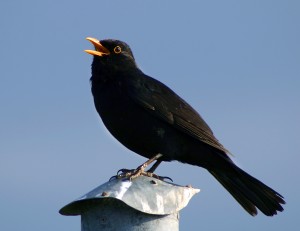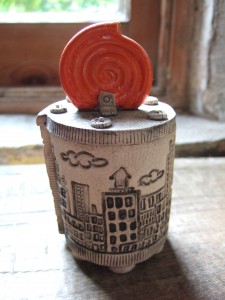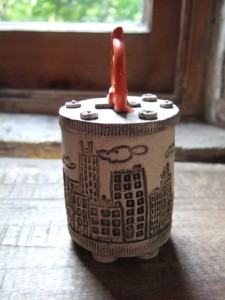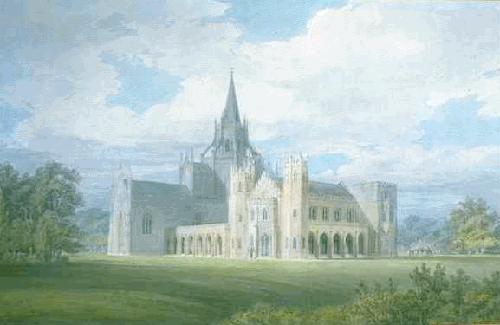
Adlestrop station sign, now in the bus shelter at Adlestrop. Photo by Graham Horn.
Almost exactly one hundred years ago, a man caught a train from Oxford, heading north-west to Worcester. Nothing special about that, you might think. The train stopped at the small station of Adlestrop in the Cotswolds, waited a while, and then moved on. Again, nothing untoward there. But the circumstances of that stop made such an impression on the passenger, the poet Edward Thomas, that he later wrote what was to become perhaps his most famous poem:
Adlestrop
Yes, I remember Adlestrop—
The name, because one afternoon
Of heat the express-train drew up there
Unwontedly. It was late June.
The steam hissed. Someone cleared his throat.
No one left and no one came
On the bare platform. What I saw
Was Adlestrop—only the name
And willows, willow-herb, and grass,
And meadowsweet, and haycocks dry,
No whit less still and lonely fair
Than the high cloudlets in the sky.
And for that minute a blackbird sang
Close by, and round him, mistier,
Farther and farther, all the birds
Of Oxfordshire and Gloucestershire.

Rosebay willowherb growing alongside railway tracks. Photo by David Wright.
I adore this poem.
It is so poignant for so many reasons. The journey was made on 23 June 1914. Five days later, on 28 June, Archduke Franz Ferdinand was assassinated in Sarajevo, an event which is generally considered to have precipitated the First World War. The UK entered the war on 4 August 1914. Thomas enlisted in the Army, and was killed at the Battle of Arras on 9 April 1917. The poem conjurs up that lost, innocent period before the horrors of global and mechanised warfare devastated Europe and decimated a generation.
It also summons up the midsummer heat of a lost, rural England. The station of Adlestrop was closed in the 1960s, during the Beeching cuts that finished off so many of the small rural train lines. Haycocks are no longer made; songbirds are in desperate decline. But the beauty of the poem is everlasting.
What is interesting too about this poem is how its skeleton can be so clearly seen in Thomas’s field notes for that day:
23 June 1914. A glorious day from 4.20 a.m. and at 10 tiers above tiers of white cloud with dirtiest grey bars above the sea of slate and dull brick by Battersea Park. Then at Oxford tiers of pure white with loose longer masses above and gaps of dark clear blue above hay-making and elms.
Then we stopped at Adlestrop, through the willows could be heard a chain of blackbirds‘ songs at 12.45 and one thrush and no man seen, only a hiss of engine letting off steam. Stopping outside Campden by banks of long grass, willowherb and meadowsweet, extraordinary silence between two periods of travel—looking out on grey dry stones between metals and the shining metals and over it all the elms willows and long grass—one man clears his throat—a greater than rustic silence. No house in view. Stop only for a minute till signal is up.
(The Collected Poems of Edward Thomas, edited by R George Thomas, Oxford University Press 1981 (1985 reprint), 135-6)
Thomas wrote the poem sometime between 1 January and 24 May 1915 (op. cit., xvii); it preserves perfectly those small, still moments in late June 1914 before all hell broke loose.
Lest We Forget.

A male blackbird singing. Photo by Malene Thyssen.















